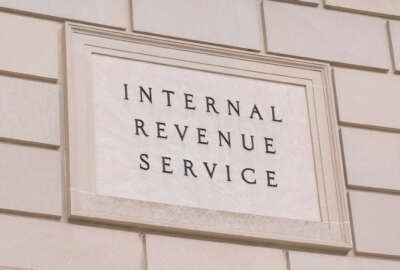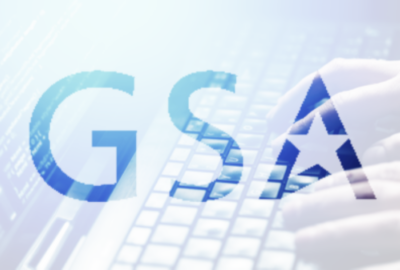IRS makes Direct File permanent option to file taxes online, invites all states to opt in
The IRS Direct File system that lets households file their federal taxes online — and for free — is here to stay, after taxpayers tested the platform.
An IRS-run system that lets households file their federal tax returns online — and for free — is here to stay, after the agency let taxpayers test the platform out earlier this year.
The IRS is making its Direct File platform a permanent option for taxpayers to file their federal tax returns, and inviting all 50 states and the District of Columbia to participate during next year’s next filing season.
A dozen states opted into the Direct File pilot this year. More than 140,000 taxpayers used the platform to file their federal tax returns — exceeding the IRS’ goal of 100,000 users. About 19 million taxpayers living in those 12 states were eligible to use Direct File this year.
IRS Commissioner Danny Werfel told reporters Thursday that taxpayers who used Direct File generally spent less than an hour to file their tax returns, and that many completed their returns in as little as 30 minutes.
“The clear message is that many taxpayers across the nation want the IRS to provide options for filing electronically at no cost,” Werfel said.
The IRS has been gathering feedback from Direct File pilot users and other interested parties, to decide whether to scale up the project. The agency heard from more than 100 members of Congress and dozens of community groups and nonprofits about the Direct File pilot.
“We took the time to get it right, and found the right first step to test the demand and user experience, and build a strong product. We will apply that same critical lesson next year as we take a strategic approach to expanding direct files availability and capabilities,” Werfel said.
Nearly half of Direct File users reported paying for tax preparation last year. The IRS estimates the average American spends $270 and 13 hours filing their taxes every year.
Taxpayers who participated in the pilot received more than $90 million in refunds, and saved about $5.6 million in filing costs.
The IRS developed the Direct File platform with help from the White House’s U.S. Digital Service, the General Services Administration’s 18F team and private-sector partners.
In a GSA-led survey of more than 11,000 Direct File users, 90% of respondents rated their experience with the platform as “excellent” or “above average.”
Werfel said Direct File will remain “one option among many,” and that taxpayers can always choose the way they’d prefer to file their taxes.
“We have heard from many taxpayers who prefer to file their taxes directly with the IRS. We also know that many taxpayers prefer to work with a third party,” he said. “The IRS will continue to support all filing options; giving taxpayer options strengthens the tax filing system.”
Werfel said Direct File is not meant to replace “other important options” from companies who have offered online tax preparation services for more than two decades.
The IRS, he added, will continue to support the Free File program, which allows taxpayers under a certain income threshold to file online through private tax preparers.
“Everything that we’re doing is based on a first principle of choice,” Werfel said.
Treasury Secretary Janet Yellen said that over the next few years, the IRS will expand direct file, “so it supports all of the most common tax situations.”
“The success of the direct file pilot means there’s now a strong demand for direct file from taxpayers across the country,” Yellen said.
Werfel said taxpayers applying for certain refundable tax credits or with certain retirement income were ineligible to participate in the first year of the Direct File pilot.
IRS set up a dedicated team of customer service representatives to handle questions from Direct File users, and set up its largest instance of live chat support.
Werfel said the number of states who opt into Direct File next year will depend on their ability to stand up their own state-level free file platforms.
“Once you’re done with your federal taxes, we hand you off to our partners at the state, and they take you onto their state solution, or what you might call the state version of Direct File,” he said.
Werfel said the number of employees it will need to hire for its Direct File team will depend on the number of states that opt into the project.
“We are inviting all 50 states, but we don’t know yet how many states will participate. We encourage as many as possible to work with us,” he said.
Werfel said launching Direct File cost about $31.8 million. The IRS spent about $24 million on the project while the U.S. Digital Service spent more than $7 million of its own funds.
The IRS asked Congress for up to $75 million in its fiscal 2025 budget request, if it decided to expand Direct File.
“I don’t see a scenario in which we would significantly or materially exceed that. I guess it’s possible. But that’s not currently the expectation,” Werfel said.
A Treasury official said total costs for Direct File “will depend on the scope of the product and service offered, as well as the number of filers that elect to use it.”
Deputy Treasury Secretary Wally Adeyemo said at a conference Thursday that IRS multi-year funding in the Inflation Reduction Act allowed the agency to start small and incrementally test the Direct File platform in phases.
“This approach paid off. There was no widespread outages and the system was able to handle tens of thousands of returns a day,” Adeyemo said in a video message at the Code for America Summit in Oakland, California.
Merici Vinton, the Direct File deputy service owner at the U.S. Digital Service, said 86% of people who used Direct File said it increased their trust in the IRS.
“All of our prioritization and decision-making went into how can we reduce the burden of tax filing,” Vinton said at the Code for America Summit. “How can we make it transparent? How can we make it less scary? How can we make things clearer and as straightforward as possible?”
Bridget Roberts, the IRS’ Direct File chief, said the IRS worked with California, Arizona, Massachusetts, New York and Washington State to develop state-led tax filing platforms.
“They were willing to come along on this journey with us, and we learned a lot. I think the states themselves learned a lot about what it meant to allow taxpayers to seamlessly file both our federal and state returns, even though they were two totally separate tools,” Roberts said.
Copyright © 2025 Federal News Network. All rights reserved. This website is not intended for users located within the European Economic Area.
Jory Heckman is a reporter at Federal News Network covering U.S. Postal Service, IRS, big data and technology issues.
Follow @jheckmanWFED






